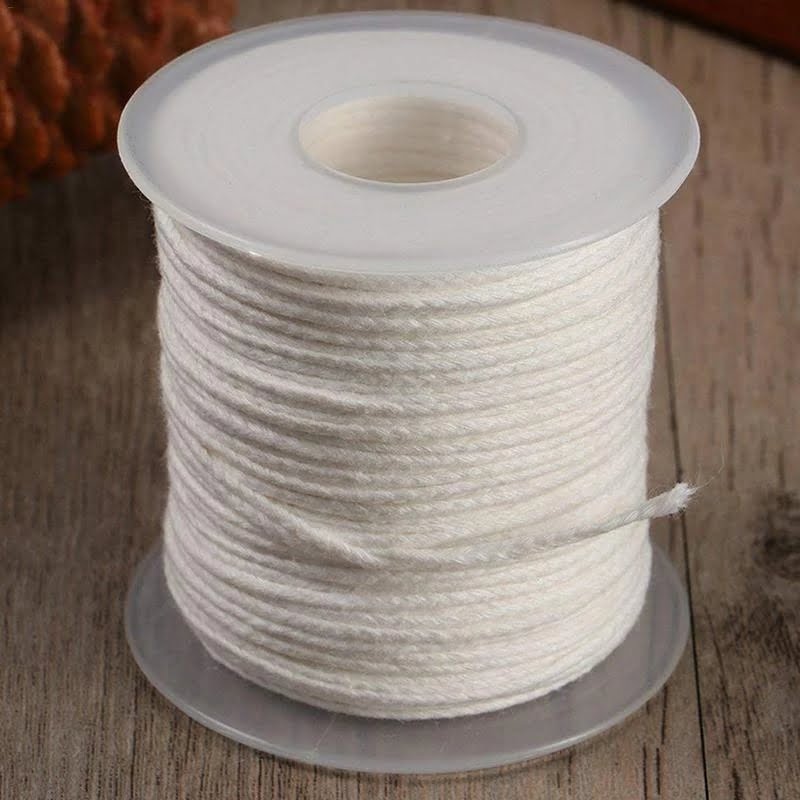Soy candles have become increasingly popular in recent years due to their numerous benefits over traditional paraffin candles. Made from soybean oil, these candles offer a cleaner and healthier alternative for both the environment and the individuals using them. If you’re interested in making your own candles, learning how to start making soy candles is a great place to begin.
Soy candles are made from soybean oil, which is a natural and renewable resource. Unlike paraffin candles, which are made from petroleum, soy candles do not release harmful toxins or pollutants when burned. This makes them a safer choice for indoor environments, especially for those with respiratory sensitivities or allergies.
In addition to health benefits, soy candles have gained popularity due to their environmental advantages. Soy wax is biodegradable and derived from a renewable source, which reduces our reliance on fossil fuels. Furthermore, soy candle production generates less carbon dioxide emissions compared to paraffin candle manufacturing, contributing to a smaller carbon footprint.
The rising demand for eco-friendly and sustainable products has also played a significant role in the increasing popularity of soy candles. Consumers are becoming more conscious of the impact their choices have on the environment and are actively seeking alternatives that align with their values. By making your own soy candles, not only can you enjoy their benefits but also contribute to reducing waste and promoting sustainability.
In the following sections, we will explore the various benefits of making soy candles yourself as well as provide you with step-by-step instructions on how to get started.
We will discuss essential tools and materials required for candle making, tips for troubleshooting common issues that may arise during the process, advice on choosing the right wicks, safety precautions you should take while working with hot wax, packaging ideas for your homemade soy candles’ presentation, and finally strategies for marketing and selling your creations.
Now let’s dive into why making your own soy candles is a worthwhile endeavor.
Benefits of Making Soy Candles
Making soy candles offers several benefits, both in terms of health and the environment. Firstly, soy candles are known to be healthier than traditional paraffin candles. This is because soy wax is made from natural soybean oil, whereas paraffin wax is derived from petroleum, a non-renewable resource. Soy wax burns cleaner and produces less soot, reducing the risk of respiratory irritation and allergies. Additionally, soy candles do not release harmful toxins or carcinogens into the air when burned.
Soy candles are also more environmentally friendly compared to their paraffin counterparts. Harvesting soybeans for candle production is a renewable process that supports sustainable agriculture practices. In contrast, the extraction of petroleum for paraffin wax contributes to environmental issues such as air pollution and habitat destruction. By choosing to make your own soy candles, you can actively reduce your carbon footprint and support eco-friendly alternatives.
Aside from the health and environmental advantages, making your own soy candles can also save you money in the long run. Purchasing store-bought soy candles can be expensive, especially if you enjoy burning them regularly or want larger quantities for events or gifts.
By making your own soy candles at home, you have control over the quantity and quality of materials used, allowing for cost-effective production. Moreover, when compared to other types of candle-making such as beeswax or gel candles, soy wax is generally more affordable.
To get started with making your own soy candles, there are a few essential tools and materials that you will need. Firstly, you will require a heat-resistant container to melt the wax in. Popular choices include glass jars or metal tins with wide openings for easy pouring.
You will also need clean-burning wicks specifically designed for use with soy wax. Other necessary supplies include a double boiler or melting pot to heat the wax evenly, a thermometer to monitor the temperature accurately during the melting process, a fragrance oil or essential oil for scenting the candles, and dye or color blocks if you wish to add color to your creations.
Sourcing these materials can be done both online and in physical stores. Various websites offer dedicated candle-making kits that contain all the necessary tools and materials conveniently packaged together. Additionally, local craft stores often carry a range of candle-making supplies.
Tools and Materials Needed
List of essential tools and materials
To start making soy candles, you will need to gather a few essential tools and materials. Here is a list of what you will need:
- Soy wax: The main ingredient in soy candles is soy wax, which can usually be found in flake or block form. Make sure to choose a high-quality soy wax for the best results.
- Candle containers: You will need containers to pour your melted wax into. Glass jars or tins are popular choices for soy candles as they allow for a clean and even burn.
- Thermometer: A thermometer is necessary to ensure that the wax reaches the correct pouring temperature. This will help prevent any issues with the consistency and performance of your candles.
- Fragrance oils: If you want scented candles, you will need fragrance oils to add pleasant aromas to your soy candles. Choose from a wide variety of fragrance options available on the market.
- Colorants: While optional, colorants can be used to add a touch of vibrancy to your soy candles. Dye chips or liquid dyes specifically made for candle-making are ideal choices.
- Wicks: Wicks are crucial for proper candle burning as they provide the fuel needed for the flame. Choose wicks that are specifically designed for use with soy wax candles.
Where to source these materials
Finding the right materials for making soy candles can be quite easy if you know where to look. Here are some common sources for these materials:
- Craft stores: Local craft stores often carry supplies like soy wax, candle containers, fragrance oils, and wicks specifically made for candle-making.
- Online suppliers: There are numerous online suppliers that specialize in candle-making materials, offering a wide selection of ingredients and tools at competitive prices.
- Wholesale suppliers: If you plan on making soy candles in large quantities or starting a small business, consider reaching out to wholesale suppliers. Purchasing in bulk can save you money in the long run.
- Local businesses: Support local businesses by checking if any candle-making workshops or suppliers are available in your area. They may have the materials you need and can provide helpful advice for beginners.
By finding reliable sources for your tools and materials, you can ensure that you have everything you need to start making soy candles right at home.
Step-by-Step Guide
To start making soy candles, follow these step-by-step instructions:
- Measure and melt the wax: Begin by measuring the amount of soy wax flakes you will need for your candle. Use a kitchen scale for accuracy. Place the measured wax into a double boiler or a heat-safe container placed in a pot of boiling water. Heat gently, stirring occasionally, until the wax reaches a temperature between 170 to 180 degrees Fahrenheit (76 to 82 degrees Celsius).
- Add fragrance and color: Once the wax has melted completely, remove it from the heat source and allow it to cool slightly. It is recommended to add fragrance oils when the wax is around 160 degrees Fahrenheit (71 degrees Celsius). For coloring your soy candles, use specially formulated candle dye chips or liquid candle dyes. Add the desired amount of fragrance oil and colorant to the melted wax, stirring gently but thoroughly to ensure even distribution.
- Prepare the containers and wicks: While your fragranced and colored wax is cooling down further, prepare your candle containers by placing wicks in them. Select a suitable wick size according to the diameter of your chosen container. Attach adhesive wicks to the center of each container’s base or use silicone dots or hot glue to secure them in place.
- Pouring and setting: Slowly pour your prepared wax mixture into the containers with care, ensuring that each wick remains centered during pouring. Fill each container almost to its rim, leaving about half an inch of space at the top for future topping up if necessary. Allow the candles to cool completely and set undisturbed for at least 24 hours before using or packaging.
Remember that precision and attention to detail are crucial when making soy candles. Accurate measurements and proper melting temperatures will play a significant role in achieving high-quality results.
By following this step-by-step guide, you can create beautiful handmade soy candles that are uniquely fragranced and colored to your liking. Enjoy the process and have fun experimenting with different combinations to find your perfect scent.
Choosing the Right Wicks
Explanation of Different Types of Wicks Available
When it comes to choosing the right wick for your soy candles, it’s important to understand the different types available and how they can affect the performance of your candles. The wick is responsible for delivering the necessary fuel (wax) to the flame, so selecting the appropriate wick plays a crucial role in achieving a clean and efficient burn.
There are several types of wicks commonly used in candle making, including cotton wicks, paper core wicks, and wooden wicks. Cotton wicks are widely popular due to their affordability and compatibility with various candle formulations. They come in different sizes and thicknesses, allowing you to find the perfect match for your container size and desired burn time.
Paper core wicks consist of a cotton braid around a paper core, providing additional stability during burning. These wicks are recommended for larger containers or pillar candles that require a stronger flame to melt the wax uniformly.
Wooden wicks have gained popularity in recent years due to their unique crackling sound reminiscent of a fireplace. These natural wood wicks bring an added aesthetic element to your soy candles and are suitable for larger containers or jar candles.
How to Select the Appropriate Wick for Your Soy Candles
Choosing the right wick size depends on various factors such as container diameter, type of wax, fragrance load, and desired burn time. A properly sized wick ensures that your candle burns evenly without excessive smoking or tunneling.
To determine the appropriate wick size, consider using a testing kit that includes multiple sizes. Start with the smallest recommended size based on your container diameter and test it out by burning a small candle sample. Observe its performance in terms of flame height, wax pool formation, and even burning.
If you notice excessive smoking or mushrooming at the top of the flame, this indicates that the wick is too large. On the other hand, if the flame is consistently weak and has trouble consuming the wax pool, it means that the wick is too small.
Keep in mind that different waxes and fragrances may require different wick sizes, so experimentation and testing are key to finding the perfect match. Document your findings for each combination to ensure consistency when producing larger batches of soy candles.
By understanding the different types of wicks available and selecting appropriate sizes based on careful testing, you can ensure a successful burn for your soy candles, giving you beautiful and long-lasting results every time.
Safety Precautions
When making soy candles, it is important to prioritize safety to minimize the risk of accidents and injuries. Here are some safety precautions to keep in mind throughout the candle-making process:
- Handling hot wax: The first and most important safety precaution is to handle hot wax with care. Always use heat-resistant gloves or oven mitts when working with melted wax, as it can cause severe burns if it comes into contact with the skin. Be cautious while pouring the hot wax and avoid any sudden movements that can lead to spills or splashes.
- Adequate ventilation: Ensure you have proper ventilation in your workspace when making soy candles. Wax fumes can be harmful if inhaled excessively, so it is essential to work in a well-ventilated area. Open windows or use fans to circulate the air and prevent the buildup of fumes.
- Fire safety: Candles involve heat and an open flame, so fire safety measures should be taken seriously. Keep flammable objects away from your workspace and ensure there are no combustible materials nearby. Have a fire extinguisher accessible in case of emergencies, and never leave a burning candle unattended.
- Working with dyes and fragrances: If you choose to add color or fragrance to your soy candles, make sure to follow the recommended guidelines provided by the manufacturer. Some dyes or fragrances may have specific handling instructions due to their chemical components. Wear gloves and eye protection when working with these additives to avoid any skin irritation or accidental ingestion.
- Cleaning up spills: In case of any spills or accidents during the candle-making process, clean up immediately using appropriate cleaning agents for wax removal. Avoid using water as it can cause the wax to spread further and create slippery surfaces.
Taking these safety precautions will help ensure a safe and enjoyable experience while making soy candles at home.
| Safety Precautions: |
|---|
| 1. Handling hot wax: Use heat-resistant gloves or oven mitts to avoid burns. |
| 2. Adequate ventilation: Work in a well-ventilated area to prevent inhaling excessive wax fumes. |
| 3. Fire safety: Keep flammable objects away, have a fire extinguisher accessible, and never leave a burning candle unattended. |
| 4. Working with dyes and fragrances: Follow manufacturer guidelines, wear protective gear, and handle with care. |
| 5. Cleaning up spills: Immediate cleanup using appropriate agents for wax removal, avoiding water to prevent further spreading. |
Troubleshooting Common Issues
As with any craft or DIY project, making soy candles may come with its fair share of challenges. It is important to be aware of common issues that may arise during the candle-making process and know how to troubleshoot them effectively.
One common issue that candle makers encounter is frosting. Frosting appears as a white, powdery substance on the surface of the candle and can affect its overall appearance. This typically occurs due to temperature fluctuations during the cooling process. To minimize frosting, it is recommended to cool your candles slowly and avoid sudden temperature changes. Using a heat gun or blow dryer on low heat can also help smooth out any frosting that does occur.
Another issue that may arise is tunneling. Tunneling refers to uneven burning in which only a narrow tunnel is created down the center of the candle, leaving a significant amount of unused wax along the sides. To prevent tunneling, it is important to trim the wick to an appropriate length (usually around ¼ inch) before each burn and allow the candle to burn long enough so that the entire top layer melts evenly.
In addition to these common issues, there may be other challenges such as poor scent throw or uneven color distribution. These issues can often be resolved through experimentation with different fragrance oils and dyes, adjusting pouring temperatures, or using additives like stearin.
| Issue | Cause | Troubleshooting Solution |
|---|---|---|
| Frosting | Temperature fluctuations during cooling process | Cool candles slowly, use heat gun/blow dryer on low heat |
| Tunneling | Uneven burning due to improper wick trimming and burn time | Trim wick to ¼ inch, allow candle to burn long enough for full melt pool |
| Poor Scent Throw/Uneven Color Distribution | Various factors including fragrance oils, dyes, pouring temperatures, and additives | Experiment with different elements to find optimal combination |
Packaging and Labeling
Once you have successfully made your soy candles, the next step is to package them in an appealing way and label them correctly. Creative packaging not only enhances the aesthetic appeal of your candles but also helps protect them during transportation. Additionally, proper labeling ensures that your customers are aware of important information about the candles they are purchasing.
When it comes to packaging, there are numerous options to choose from. You can go for classic glass jars with lids or opt for unique containers such as tins, tea cups, or mason jars. Consider choosing packaging materials that are not only visually appealing but also eco-friendly and sustainable, aligning with the environmentally-friendly nature of soy candles.
In terms of labeling, it is essential to include key information on each candle. This should include the name of your company or brand, the scent of the candle, any specific warnings or safety instructions if necessary, and the volume or weight of the candle. You may also want to include a brief description of the ingredients used or any special features of your soy candles.
Labels must comply with regulations set by relevant authorities. Make sure to research local regulations regarding labeling requirements for candles in your area. It is important to clearly communicate any safety warnings or potential allergens present in your candles on the labels.
Remember that packaging and labeling play a significant role in attracting customers and creating a professional image for your brand. Taking time to design attractive packaging and ensuring clear and informative labels will help differentiate your soy candles from others in the market and make a positive impression on potential customers.
Marketing and Selling Your Soy Candles:
Now that you have perfected your soy candle-making skills, it’s time to start sharing them with others and turning your hobby into a business venture. To successfully market and sell your homemade soy candles, it is crucial to create an effective marketing strategy and build an online presence.
One of the first steps towards marketing your soy candles is to create a brand identity. This includes choosing a memorable and relevant name for your business, designing a logo, and creating cohesive branding materials such as business cards and labels. Consistency in your branding will help customers recognize your products and associate them with quality.
In today’s digital age, having an online presence is vital for any business. Start by building a website where customers can learn more about your candles, purchase them online, and contact you for inquiries or custom orders. Use professional product photography to showcase the beauty and unique qualities of your candles.
Social media platforms are powerful tools for marketing and advertising. Utilize platforms like Instagram, Facebook, and Pinterest to share captivating images of your soy candles, engage with potential customers through posts and stories, and promote special discounts or new product launches. Collaborate with influencers or bloggers in the home decor or wellness niche to reach a wider audience.
Don’t underestimate the power of word-of-mouth marketing. Encourage satisfied customers to leave reviews or testimonials on your website or social media pages. Consider attending local craft fairs or markets where you can display your soy candles in person and directly interact with potential customers.
Remember that consistency, high-quality products, exceptional customer service, and innovative marketing techniques are key to establishing a successful soy candle business. Stay active on social media platforms, update your website regularly with new content or promotions, and constantly seek feedback from customers to improve your products and grow your brand recognition.
Marketing and Selling Your Soy Candles
Marketing and selling your homemade soy candles can be a rewarding venture. Not only do you get to share your creations with others, but you also have the potential to turn your hobby into a profitable business. Here are some tips on how to effectively market and sell your soy candles.
Firstly, building an online presence is essential in today’s digital world. Create a visually appealing and user-friendly website where customers can browse and purchase your soy candles. Showcase high-quality images of your products and provide detailed descriptions, including information about the fragrances used and the benefits of soy candles. Consider offering discounts or promotions to attract new customers and encourage repeat business.
Additionally, leverage social media platforms to reach a wider audience. Utilize platforms such as Instagram, Facebook, Pinterest, and TikTok to showcase your soy candles through captivating visuals and engaging content. Share behind-the-scenes videos of the candle-making process or customer testimonials to build trust and credibility. Engage with your followers by responding to comments, hosting giveaways, or conducting live Q&A sessions.
When it comes to marketing, word-of-mouth is powerful. Encourage satisfied customers to leave reviews on your website or social media pages. Consider partnering with local businesses or influencers who align with your brand values to promote your soy candles. Attend craft fairs, farmers markets, or trade shows to showcase your products in person and connect with potential customers face-to-face.
To optimize sales, consider offering customization options for your soy candles such as personalized labels or custom fragrances. This allows customers to feel a deeper connection with their purchase and increases the likelihood of them recommending your products to others.
In conclusion, marketing and selling your homemade soy candles requires strategic planning and effective communication with potential customers. By establishing an online presence through a website and social media platforms, leveraging word-of-mouth marketing techniques, and offering customization options for your products, you can successfully promote and sell your soy candles while building a loyal customer base. Embrace creativity, authenticity, and consistency in your marketing efforts and watch your homemade soy candle business thrive.
Frequently Asked Questions
What do you need to start making soy candles?
To start making soy candles, you will need a few essential ingredients and materials. Firstly, you will need soy wax flakes, which are the base of the candle. You’ll also need a suitable container or mold to pour the melted wax into.
Additionally, you’ll require wicks, which serve as the core of the candle and allow it to burn steadily. Fragrance oils or essential oils can be added for scent, and colorants can be used if desired. A double boiler or a heat-safe container for melting the wax, a thermometer to monitor temperature, a stirring utensil, and adhesive tape or glue dots to secure the wicks are other necessary items.
How do you make soy candles step by step?
Making soy candles involves several steps that are relatively straightforward but require attention to detail. First, measure out your desired amount of soy wax flakes based on the size of your container and melt them down using a double boiler or heat-safe container over low heat. Stir occasionally while monitoring the temperature until it reaches around 185°F (85°C). Add any desired fragrance oil or essential oil once the wax has melted completely and remove it from heat before pouring into your chosen container.
Place the wick in position and hold it firmly until it sets in place or use adhesive tape/glue dots to secure it centered at the bottom of your container. Slowly pour the melted wax into your container being careful not to disturb the wick’s positioning, leaving some space at the top. Allow it to cool and solidify completely before trimming the wick to an appropriate length.
Do soy candles sell well?
In recent years, soy candles have gained popularity in comparison to traditional paraffin candles due to their environmentally friendly nature. Soy candles tend to sell well for various reasons. Firstly, they are made from natural ingredients such as soy wax derived from soybean oil rather than crude petroleum-based paraffin wax used in most commercial candles; therefore they appeal more to consumers seeking eco-friendly alternatives. Additionally, these candles have a cleaner burn with less soot, making them healthier to breathe in.
Their longer burning time compared to paraffin candles also adds value for customers. Soy candles often offer a wider range of fragrance options and can be customized according to personal preferences. All these factors contribute to their marketability, and with increasing awareness about environmental concerns, soy candles are likely to continue selling well in the current market.

Welcome to my candle making blog! In this blog, I will be sharing my tips and tricks for making candles. I will also be sharing some of my favorite recipes.





